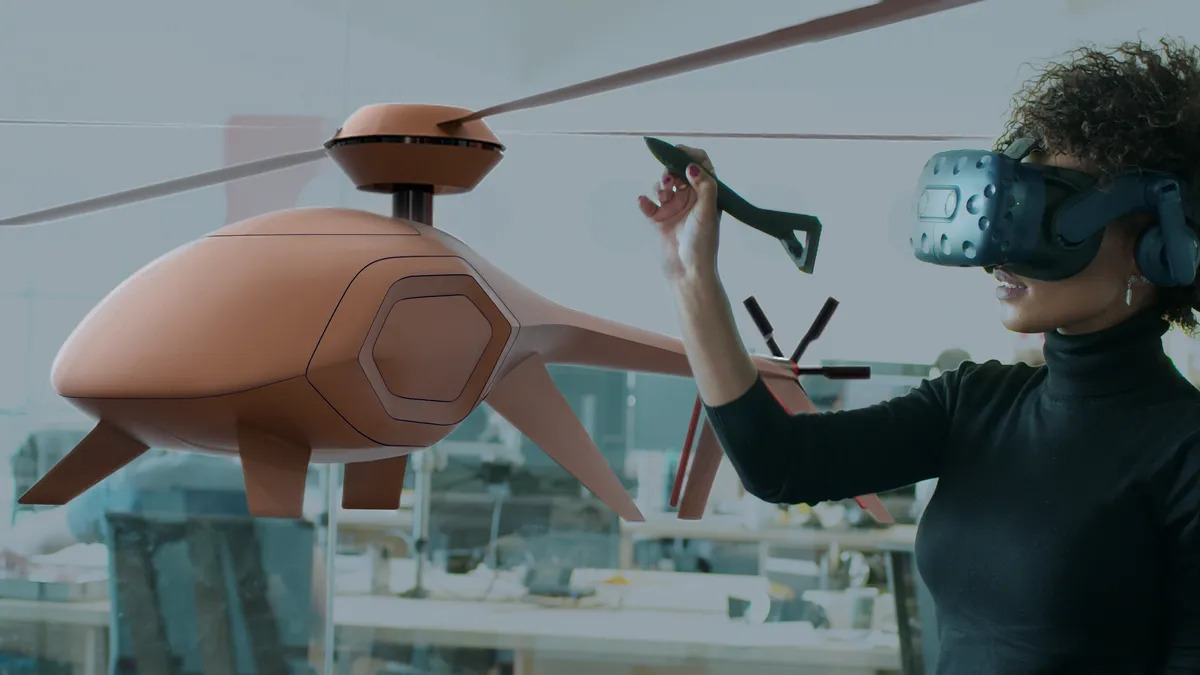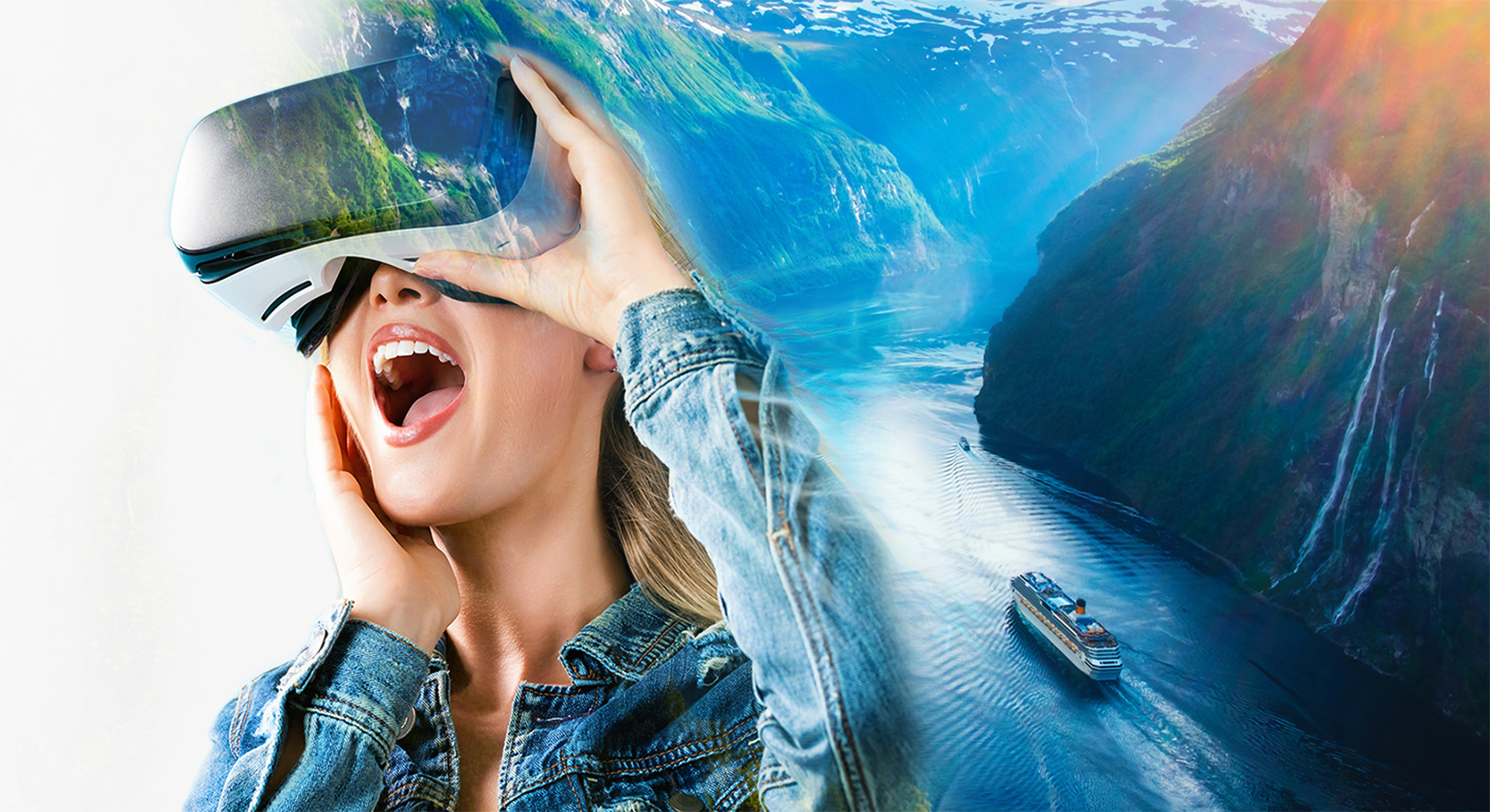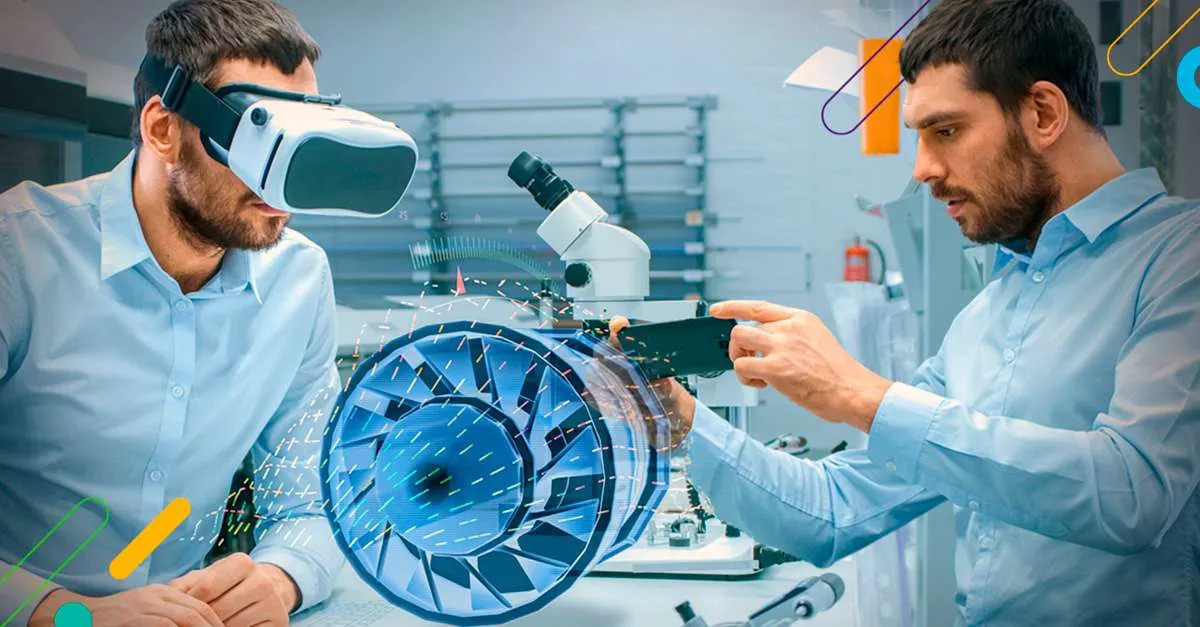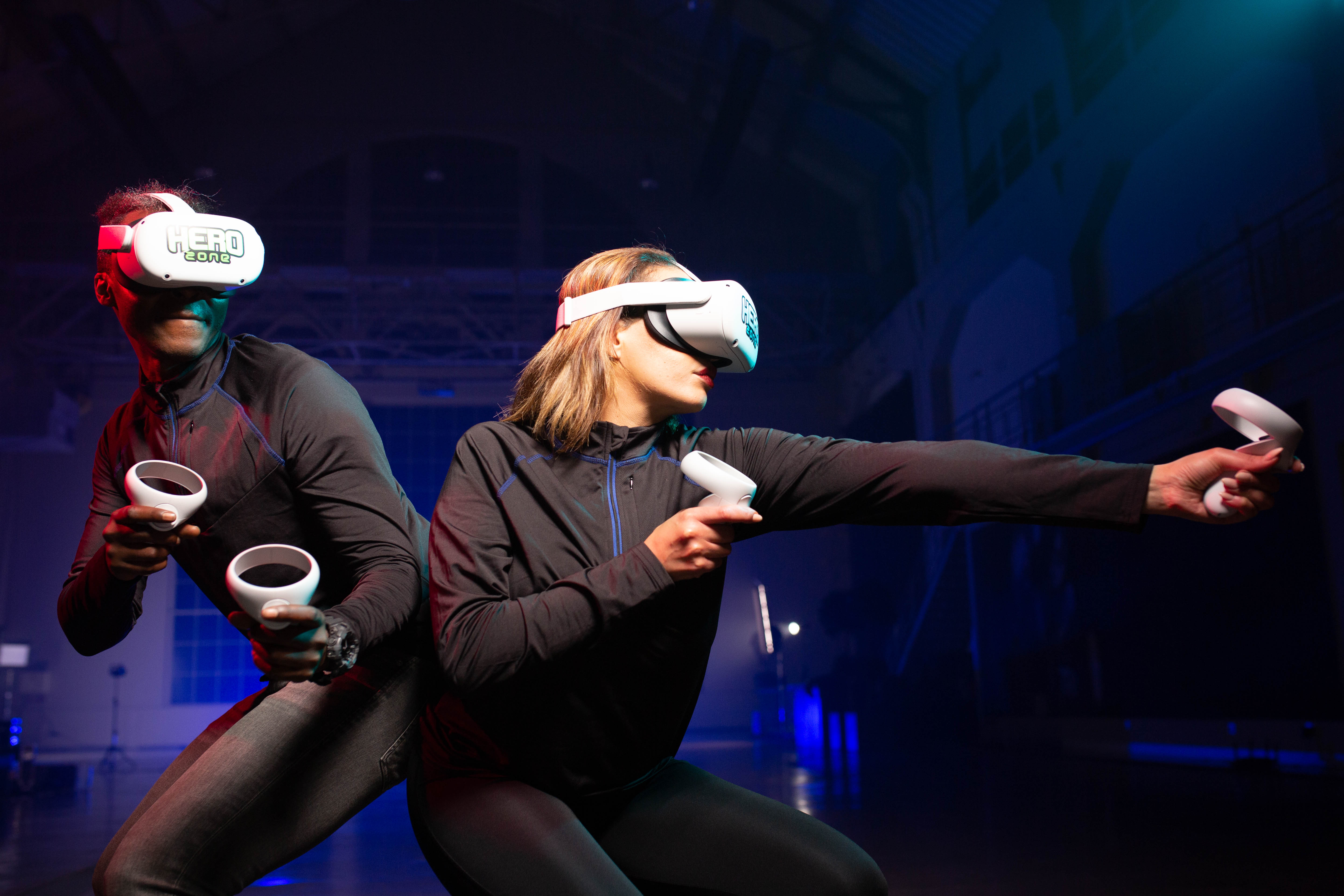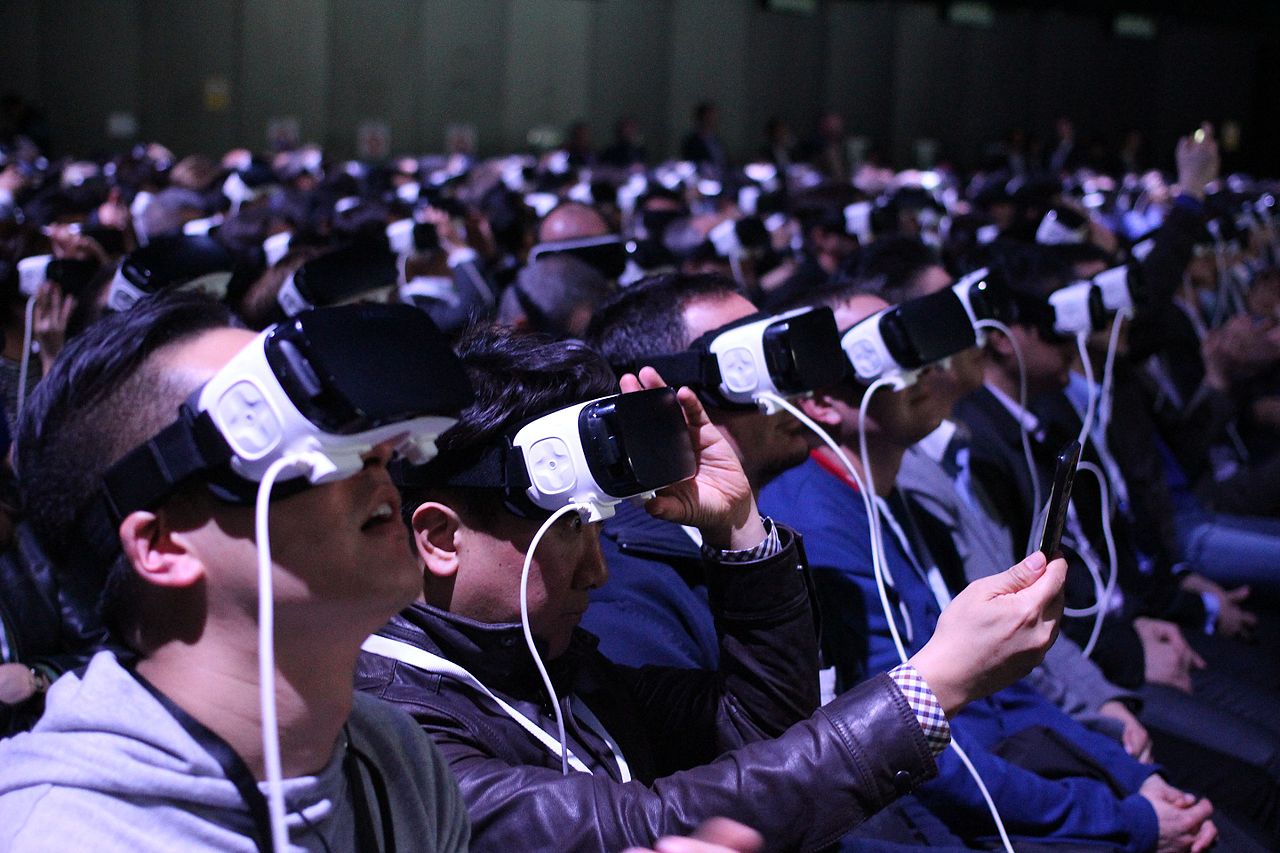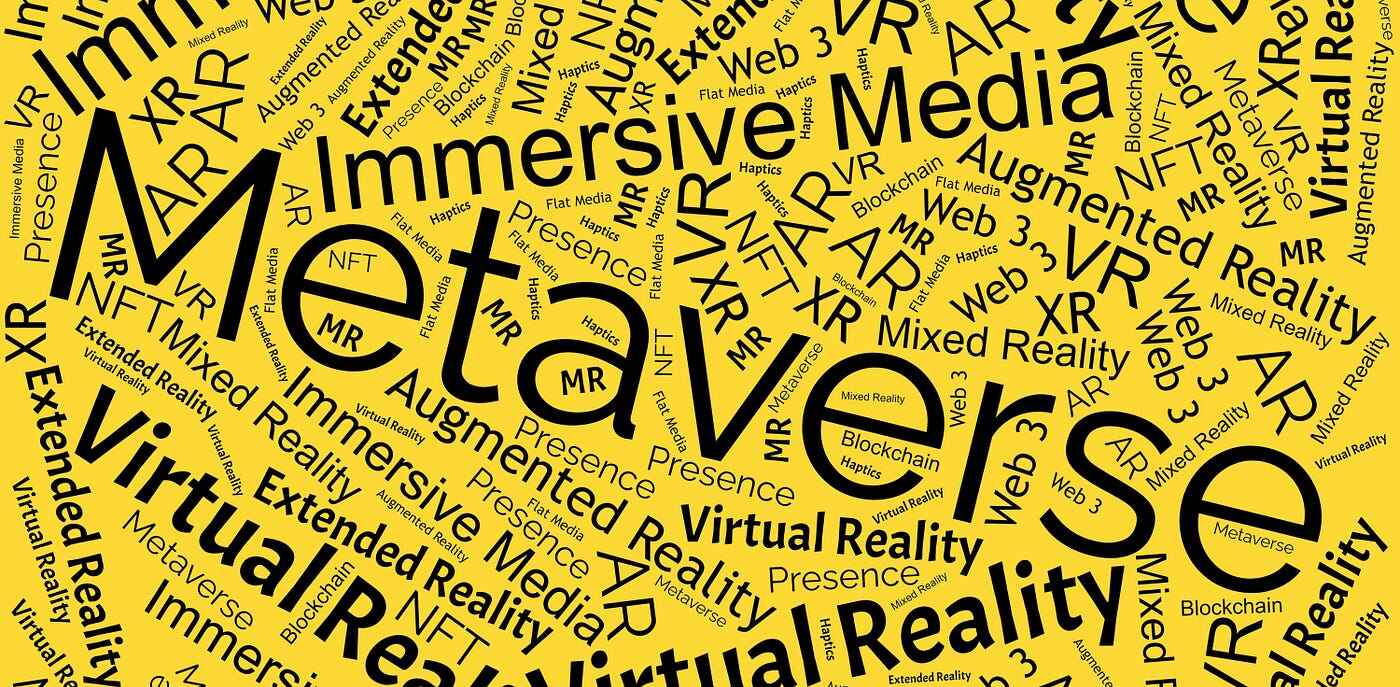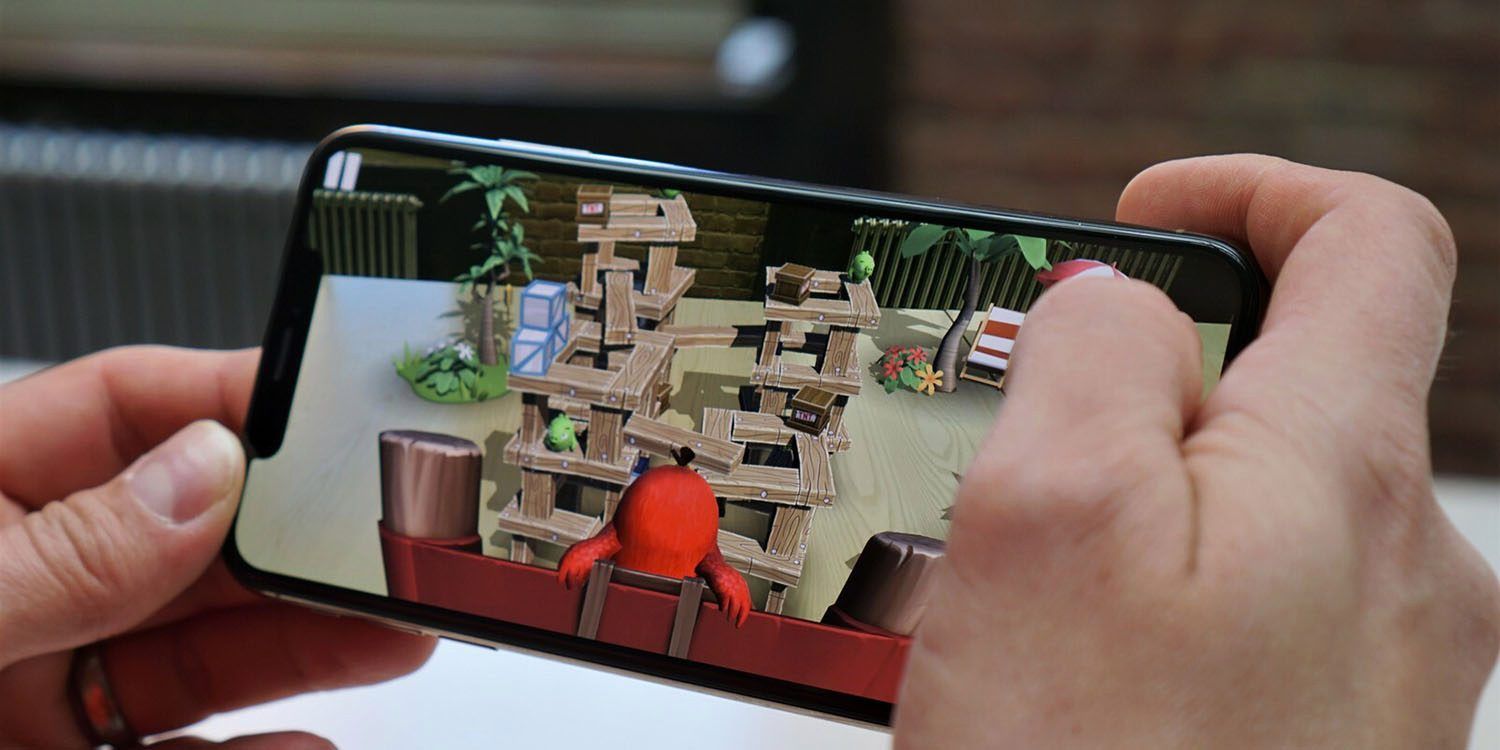Introduction
Welcome to the exciting world of virtual reality! With the rapid advancements in technology, virtual reality has become more accessible and immersive than ever before. Whether you’re a gaming enthusiast, a creative developer, or simply curious about this emerging medium, this article will guide you through the process of creating your own virtual reality experience.
Virtual reality, or VR, refers to a simulated experience that can be similar to or completely different from the real world. It allows users to be fully immersed in a three-dimensional environment, where they can interact with virtual objects and even other users in some cases. By wearing a headset and using specialized input devices, users can explore, engage with, and experience virtual worlds like never before.
The applications of virtual reality are expanding rapidly across various industries. From gaming and entertainment to education, healthcare, and even architecture, VR has the potential to revolutionize how we interact with digital content and enhance our understanding of the world around us.
In this article, we will explore the benefits of virtual reality, guide you through the process of building your own VR experience, and provide you with practical tips and considerations for selecting the right hardware and software, designing virtual environments, incorporating interactive elements, creating immersive audio and visuals, testing and refining your VR experience, and finally, distributing and sharing your creation with others.
So, whether you’re a beginner or have some experience in VR, let’s dive in and unlock the possibilities of this thrilling technology!
What is Virtual Reality?
Virtual reality (VR) is an immersive technology that transports users into a computer-generated three-dimensional environment. It simulates a realistic and interactive experience that can be similar to or completely different from the real world.
At the core of virtual reality is the use of a headset or a specialized device called a virtual reality headset. This device typically consists of a high-resolution display that is placed close to the user’s eyes, providing a wide field of view and a sense of depth perception. The headset is equipped with motion tracking sensors that detect the user’s head movements, allowing them to look around and explore the virtual environment.
In addition to the visual experience, virtual reality often incorporates other sensory feedback to further enhance immersion. This can include spatial audio, where sounds are positioned in 3D space to create a more realistic audio environment, as well as haptic feedback devices that provide tactile sensations, such as vibrations or pressure, to simulate touch.
The goal of virtual reality is to create an immersive and interactive experience that tricks the user’s brain into believing they are truly present in the virtual environment. By blocking out the real world and replacing it with a computer-generated world, virtual reality has the potential to transport users to new places, enable them to interact with virtual objects, and even facilitate social interactions with other users.
The applications of virtual reality are vast and varied. In the gaming industry, VR provides players with an unprecedented level of immersion, allowing them to step into the shoes of their virtual characters and experience gameplay in a whole new way. VR is also being employed in fields such as education, where students can explore historical sites or dive into the depths of the ocean without leaving the classroom, or in healthcare, where VR is used for pain management, mental health treatments, and training healthcare professionals in realistic simulations.
As technology continues to advance and become more affordable, virtual reality is poised to revolutionize various industries and change the way we interact with digital content. From entertainment and education to art, training, and beyond, the possibilities of virtual reality are limited only by our imagination.
The Benefits of Virtual Reality
Virtual reality (VR) has gained significant popularity and acclaim due to its numerous benefits across a wide range of industries. Let’s explore some of the key advantages of using virtual reality:
1. Enhanced Immersion: Virtual reality provides a level of immersion that is unparalleled by any other medium. By fully immersing users in a virtual environment, VR can transport them to different places, times, or even entirely fictional worlds. This heightened immersion enhances engagement and creates a sense of presence that can lead to more memorable and impactful experiences.
2. Experiential Learning: Virtual reality has emerged as a powerful tool for education and training. It enables learners to actively engage with complex concepts and scenarios, promoting experiential learning. Whether it’s exploring historical sites, practicing real-life medical procedures, or simulating dangerous situations for safety training, VR provides a safe and immersive environment for hands-on learning.
3. Visualization and Design: Virtual reality allows designers, architects, and engineers to visualize and prototype their creations in a virtual space. This helps in making informed decisions, identifying design flaws, and exploring different possibilities in a more efficient and cost-effective manner. VR simulations also provide clients with a realistic preview of the final product before it is physically built.
4. Therapeutic Applications: VR has shown promising results in the field of therapy and rehabilitation. By creating immersive and controlled environments, VR can help individuals overcome fears and phobias, manage pain, treat post-traumatic stress disorder (PTSD), and improve motor skills. It offers a safe and controlled space for therapists to guide clients through challenging situations.
5. Entertainment and Gaming: Perhaps the most widely known use of virtual reality is in the entertainment and gaming industry. VR gaming takes the gaming experience to a whole new level by allowing players to physically interact with the virtual world. It provides a sense of embodiment, making players feel like they are inside the game, resulting in a more immersive and engaging gameplay experience.
6. Accessibility and Remote Collaboration: Virtual reality has the potential to bridge geographical distances, allowing people to collaborate and communicate in a virtual space. It enables remote teams to work together as if they were physically present, facilitating collaboration and saving time and travel costs. Additionally, VR can also provide accessibility for individuals with mobility limitations to participate in activities and experiences they may not have access to otherwise.
These are just a few of the many benefits that virtual reality brings to various industries. As the technology continues to evolve, we can expect even greater advancements and innovative applications of VR in the future.
Getting Started with Building a Virtual Reality
Ready to embark on the journey of building your own virtual reality (VR) experience? Let’s dive into the essential steps to get you started:
1. Define Your Goals: Before diving into the technical aspects, it’s important to define your goals for the VR experience. Are you creating a game, an educational simulation, or a training program? Clarifying your objectives will help guide your decisions throughout the development process.
2. Choose a Platform: There are various platforms to choose from when building a VR experience. Some popular choices include PC-based VR systems like the Oculus Rift or HTC Vive, mobile VR platforms like Google Cardboard or Samsung Gear VR, or standalone VR devices like the Oculus Quest. Consider factors such as budget, target audience, and desired functionality when selecting a platform.
3. Learn the Software: Familiarize yourself with the software tools and development environments used for creating VR experiences. Unity and Unreal Engine are two popular game engines that offer VR development capabilities. These tools provide a wide range of features and resources to help streamline the development process.
4. Understand Hardware Requirements: Different VR platforms have varying hardware requirements. Make sure your computer or device meets the specifications needed to run the VR experience smoothly. Check for minimum processor speeds, RAM capacity, and graphic card compatibility to ensure optimal performance.
5. Start with Small Projects: If you’re new to VR development, it’s recommended to start with small projects to gain familiarity with the workflow and best practices. Begin by creating simple VR environments or prototypes before tackling more complex projects. This iterative approach will help you build your skills and confidence over time.
6. Consider User Comfort: User comfort is crucial in VR experiences. Pay attention to factors such as motion sickness, eye strain, and fatigue. Optimize frame rates, reduce latency, and provide comfortable controls and interactions to ensure a smooth and enjoyable user experience.
7. Test and Iterate: Regular testing is crucial in the VR development process. Continuously test your VR experience to identify and address issues, gather user feedback, and make iterative improvements. This will help ensure a polished final product that meets the needs and expectations of your target audience.
8. Incorporate Feedback: Listen to user feedback and be open to incorporating suggestions and improvements. Engage with your target audience and gather insights to refine and enhance your VR experience. By incorporating feedback, you can create a more immersive and engaging experience that resonates with your users.
9. Optimize Performance: Pay attention to performance optimization to ensure smooth frame rates and minimize motion sickness. Optimize lighting, textures, and graphical effects to maintain a balance between visual fidelity and performance. Consider techniques such as occlusion culling and LOD (Level of Detail) to improve rendering efficiency.
10. Stay Updated: VR technology is continuously evolving, so it’s important to stay up-to-date with the latest trends, tools, and techniques. Engage with the VR community, attend conferences, and explore online resources to expand your knowledge and discover new possibilities in the VR landscape.
With these fundamental steps, you’re well on your way to building your own virtual reality experience. Remember to embrace creativity, explore new ideas, and enjoy the process of bringing your virtual world to life!
Choosing the Right Hardware and Software
When it comes to building a virtual reality (VR) experience, choosing the right hardware and software is essential for creating a smooth and immersive user experience. Let’s explore the key factors to consider when making these important decisions:
1. Hardware Considerations:
- VR Headset: The VR headset is the primary tool for experiencing virtual reality. There are several options available, ranging from high-end PC-powered headsets like the Oculus Rift and HTC Vive to standalone devices like the Oculus Quest. Consider factors such as resolution, field of view, comfort, and tracking capabilities when selecting a VR headset.
- Controllers: Different VR platforms offer various types of controllers, including handheld controllers, motion-tracked controllers, or even hand-tracking. Consider the level of interactivity your VR experience requires and choose controllers that provide the necessary functionality.
- Computer/Device Requirements: VR experiences often require a powerful computer or device to run smoothly. Check the recommended specifications of the VR headset and ensure your computer or device meets the requirements. Factors to consider include graphics card capabilities, processor speed, RAM, and storage space.
2. Software Considerations:
- Game Engines: Game engines like Unity and Unreal Engine are popular choices for VR development. These engines provide a wide range of tools and resources to create interactive experiences in a visual and intuitive manner. Evaluate the features and capabilities of different game engines to determine which one aligns best with your needs and skills.
- Plugins and Libraries: Depending on your VR project requirements, you may need to utilize additional plugins and libraries to implement specific features like spatial audio, physics simulations, or network functionality. Research and explore available plugins and libraries that complement your chosen game engine.
- Content Creation Tools: Creating 3D models, textures, and animations is an integral part of VR development. Consider the content creation tools that integrate well with your chosen game engine. Tools like Blender, Maya, or Substance Painter can empower you to design and create assets for your VR experience.
- Collaboration and Version Control: If you are working in a team or collaborating with others on your VR project, consider using collaboration tools and version control systems to streamline workflow and ensure effective communication and management of project assets.
3. Compatibility and Support:
- Platform Compatibility: Ensure that the hardware and software you choose are compatible with your target platform(s). Different VR platforms may have specific requirements or limitations, so it’s crucial to verify compatibility before committing to a particular hardware or software solution.
- Community Support: Consider the size and activity of the developer community surrounding the hardware and software you choose. Having a thriving community with active forums and resources can provide valuable support, troubleshooting assistance, and a wealth of knowledge to help you overcome challenges and learn from others.
By carefully evaluating and selecting the right hardware and software for your VR project, you can lay a strong foundation for creating a compelling and immersive virtual reality experience. Remember to keep your project goals and target audience in mind throughout the decision-making process, and be open to exploring new tools and technologies that can enhance your VR development journey.
Creating a Virtual Environment
One of the most exciting aspects of building a virtual reality (VR) experience is creating the virtual environment itself. A well-designed and immersive environment can greatly enhance the user’s experience. Let’s explore the key steps involved in creating a virtual environment:
1. Conceptualize and Plan: Start by brainstorming and conceptualizing the environment you want to create. Consider the purpose of your VR experience and the emotions or responses you want to evoke in your users. Determine the setting, atmosphere, and unique features that will make your environment engaging and memorable.
2. Design the Layout: Once you have a clear concept, begin designing the layout of your virtual environment. Consider the different areas or levels within the environment, the paths or routes users can take, and any key landmarks or points of interest. Pay attention to the scale and proportions to ensure a realistic and immersive experience.
3. Choose Visual Assets: Select appropriate visual assets for your environment, such as 3D models, textures, and lighting. Consider the style and aesthetics that align with your concept and the overall user experience. Create or source assets that accurately represent the objects, structures, and elements within the virtual environment.
4. Create Interactions: Integrate interactive elements into your virtual environment to enhance user engagement. These can include objects that can be picked up, levers that can be manipulated, or buttons that trigger specific actions. Design interactions that align with your overall concept and purpose, providing meaningful and intuitive experiences for users.
5. Implement Physics and Collision Detection: Make your virtual environment feel grounded and realistic by implementing physics and collision detection. This will enable objects to respond realistically to user interactions and interactions with the environment. Consider factors such as gravity, object weight, and realistic movement to create a more immersive experience.
6. Apply Lighting and Visual Effects: Lighting plays a crucial role in creating the atmosphere and mood of your virtual environment. Experiment with different lighting techniques, such as ambient lighting, directional lighting, and spotlights, to achieve the desired effect. Additionally, consider adding visual effects like particle systems, fog, or weather effects to further enhance the visual appeal.
7. Optimize Performance: Pay attention to performance optimization to ensure a smooth and seamless experience. Consider techniques like culling, LOD (Level of Detail), and occlusion to optimize rendering efficiency. Test your environment on target hardware to identify any performance bottlenecks and make necessary optimizations.
8. Test and Iterate: Regularly test your virtual environment to ensure it meets your desired goals and creates the intended experience. Gather user feedback and iterate on your design based on their input. This iterative process will help refine and improve your virtual environment to create a more immersive and enjoyable user experience.
Remember, creating a virtual environment is a creative process that requires careful planning, attention to detail, and constant refinement. With the right combination of visual assets, interactions, and optimizations, you can craft a virtual environment that captivates and delights users in the exciting world of virtual reality.
Designing Interactive Elements
When creating a virtual reality (VR) experience, designing interactive elements is crucial for engaging users and enhancing immersion. These interactive elements allow users to actively participate in the virtual environment and create a sense of agency. Let’s explore the key considerations for designing these interactive elements:
1. Purpose and Functionality: Determine the purpose and functionality of the interactive elements within your VR experience. Are they essential for progressing the story or solving puzzles? Do they provide additional information or serve as gameplay mechanics? Clarifying the purpose will help guide your design decisions and ensure that the interactions align with your overall objectives.
2. Intuitive and Natural Interaction: Strive for intuitive and natural interaction design that users can easily grasp and understand. The interaction should closely mirror real-life actions, making it intuitive for users to interact with objects and elements within the virtual environment. Consider using hand movements, gestures, or familiar controller inputs to create a seamless and immersive experience.
3. Feedback and Response: Design interactive elements that provide clear and immediate feedback to user actions. Visual cues, sound effects, and haptic feedback can all contribute to enhancing the sense of responsiveness and realism. Users should feel a connection between their actions and the resulting feedback within the virtual environment, reinforcing their agency and engagement.
4. Explore Different Interactions: Experiment with different types of interactions to add variety and engagement to your VR experience. This could include picking up and manipulating objects, pushing buttons or switches, pulling levers, or even engaging in body movements like crouching or jumping. Offering a range of different interactions adds depth and immersion to the virtual environment.
5. Balancing Realism and Playability: Strive for a balance between realism and playability in your interactive elements. While realistic interactions can enhance immersion, they should not hinder the overall enjoyment or usability of the experience. Consider user comfort, accessibility, and the desired level of challenge when designing interactions to ensure a satisfying and enjoyable user experience.
6. Consistency in Design: Maintain consistency in the design and behavior of interactive elements throughout your VR experience. Use consistent visual cues, feedback patterns, and interaction mechanics to create a sense of familiarity and predictability. Consistency promotes a smoother user experience and helps users navigate and interact with the virtual environment more effectively.
7. Iterative Testing and Refinement: Regularly test the interactive elements with users to gather feedback and identify areas for improvement. Conduct usability testing to evaluate the intuitiveness, clarity, and satisfaction of the interactions. Use the feedback to make iterative changes and refinements, ensuring that the interactive elements meet user expectations and enhance the overall VR experience.
Designing interactive elements in VR is an exciting opportunity to engage users and create a sense of presence within the virtual environment. By carefully considering their purpose, intuitiveness, feedback and response, and balance between realism and playability, you can craft interactive elements that captivate users and make your VR experience truly memorable and immersive.
Incorporating Audio and Visuals
When building a virtual reality (VR) experience, incorporating audio and visuals is essential for creating an immersive and engaging environment. These elements work together to transport users into the virtual world and evoke emotional responses. Let’s explore how you can effectively incorporate audio and visuals into your VR experience:
1. Visual Elements:
- Environment Design: Create visually stunning and detailed environments that capture the essence of your VR experience. Consider the lighting, textures, colors, and visual effects to set the mood and atmosphere. Strive for realism or choose a stylized artistic direction that complements your concept and objectives.
- User Interface Design: Design a user interface (UI) that is intuitive, visually pleasing, and unobtrusive. Ensure that the UI elements are easily readable and do not obstruct the user’s view or distract from the main immersive experience. Integrate the UI seamlessly into the virtual environment to enhance immersion.
- Animation: Use animations to bring your virtual world to life. From character movements to object interactions, animations add realism and fluidity. Pay attention to details like subtle gestures, facial expressions, and physics-driven movements to enhance the sense of presence and create a more immersive experience.
- Visual Effects: Incorporate visual effects strategically to add impact and emphasize key moments within your VR experience. Utilize effects like particle systems, dynamic lighting, weather effects, or post-processing effects to enhance the visual fidelity and create a more immersive atmosphere.
2. Audio Elements:
- Sound Design: Craft a rich and immersive soundscape that matches your virtual environment. Use ambient sounds, environmental effects, and spatial audio techniques to make the virtual world feel more alive. Pay attention to details like audio spatialization, accurate sound propagation, and appropriate sound cues to enhance realism and presence.
- Music and Soundtrack: Select or compose music that fits the mood and tone of your VR experience. Music can greatly enhance the emotional impact and immersion. Consider using dynamic music that adapts to the user’s actions or the progression of the experience to create a more personalized and engaging audio experience.
- Interaction Feedback: Use audio cues to provide feedback and response to user interactions. This can include confirming actions, indicating success or failure, or providing audio prompts and instructions. Clear and distinct audio feedback reinforces the sense of agency and enhances the user’s understanding of the virtual environment.
- Narration and Voiceovers: Consider incorporating narration or voiceovers to guide users or provide additional context and storytelling. Well-executed voiceovers can add depth and engagement to your VR experience, providing users with important information or immersing them in a compelling narrative.
3. Integration and Synchronization:
Ensure seamless integration and synchronization between audio and visuals. Properly align sound effects and visual cues to create a cohesive and immersive experience. Use sound to enhance visual triggers or build anticipation for upcoming events. The synchronization between audio and visuals helps to create a cohesive and impactful user experience.
Regularly test and iterate on your audio and visual elements throughout the development process. Gather feedback from users to ensure that the audio and visuals complement each other and enhance immersion. Continuously refine and improve these elements to create a truly captivating and memorable VR experience.
Testing and Refining the Experience
Testing and refining your virtual reality (VR) experience is a crucial step in ensuring a seamless and enjoyable user journey. Through rigorous testing and iterative refinements, you can fine-tune your VR experience to meet user expectations and create a truly immersive and engaging environment. Let’s explore the key steps involved in testing and refining your VR experience:
1. Usability Testing:
Conduct usability testing with a diverse group of users to gather feedback on their experience. Observe how users navigate and interact with the VR environment, and gather insights on the usability, intuitiveness, and effectiveness of the various elements. Pay attention to any pain points or areas of confusion, as well as positive feedback, to identify areas for improvement.
2. Performance Testing:
Test the performance of your VR experience to ensure it runs smoothly and without any technical glitches. Check for issues such as frame rate drops, latency, or graphical artifacts that may impact the user’s immersion and experience. Optimize assets, implement efficient rendering techniques, and consider performance optimizations to create a seamless and fluid VR experience.
3. User Feedback and Surveys:
Solicit user feedback through surveys or interviews to gain valuable insights into their perceptions and impressions of your VR experience. Ask targeted questions regarding engagement, emotions, interface design, and overall satisfaction. Analyze this feedback to identify areas of improvement and leverage positive feedback to solidify elements that are working well.
4. Iterative Refinement:
Based on the information gathered from usability testing and user feedback, make iterative refinements to your VR experience. Implement changes that address identified issues or enhance the overall user experience. This could involve adjusting UI elements, improving interaction mechanics, or optimizing performance. Regularly test and iterate to ensure a consistently improved and captivating VR experience.
5. Immersion Evaluation:
Assess the level of immersion achieved in your VR experience. Evaluate whether the visual and audio elements effectively transport users into the virtual environment and create a sense of presence. Consider factors such as realism, attention to detail, depth of interactions, and overall engagement. Strive to continuously enhance immersion through refined visual and audio design, intuitive interactions, and a cohesive world-building approach.
6. Scenario-based Testing:
Conduct scenario-based testing to simulate real-life situations and assess how well the VR experience performs in those scenarios. This could involve evaluating user interactions in specific scenarios or testing the VR experience in varying environmental conditions. This type of testing can reveal potential limitations, challenges, or improvements that may not have been apparent during initial testing.
7. Accessibility Testing:
Consider accessibility factors to ensure that your VR experience is inclusive and usable by a broad range of users. Test for potential barriers and challenges that users with disabilities might face and make necessary adjustments. Pay attention to factors such as color contrast, text legibility, audio cues, and alternative interaction options, to ensure equal access to your VR experience.
By rigorously testing and systematically refining your VR experience, you can create a polished and captivating environment that fulfills user expectations. Take user feedback to heart, implementing improvements and enhancements that enhance immersion, usability, and overall user satisfaction. Through continuous testing and refinement, you can build a truly impressive VR experience that leaves a lasting impact on your users.
Distributing and Sharing Your Virtual Reality
Congratulations on creating an amazing virtual reality (VR) experience! Now it’s time to share your creation with the world. Here are some key steps to consider when distributing and sharing your VR experience:
1. Selecting Distribution Platforms:
Choose the most appropriate distribution platforms based on your target audience and the platform compatibility of your VR experience. Some popular platforms include app stores for specific VR devices, online VR communities, or your own website. Research each platform’s requirements and guidelines to ensure proper formatting and submission.
2. Packaging and Deployment:
Package your VR experience into a format that can be easily distributed and installed. This may involve creating installer files, APKs, or other file formats specific to your target platforms. Make sure to test the installation process to ensure smooth deployment on users’ devices.
3. Marketing Your VR Experience:
Create awareness and generate interest in your VR experience through effective marketing strategies. Leverage social media platforms, online forums, and VR enthusiast communities to showcase screenshots, videos, and teasers. Engage with potential users, answer inquiries, and seek feedback to build anticipation and gather a following for your VR experience.
4. Providing User Documentation:
Create user documentation that explains how to use your VR experience and troubleshoot potential issues. This could include instructions for setting up VR devices, navigation controls, and interaction explanations. Clear and concise documentation enhances the user experience and reduces confusion or frustration.
5. Receiving and Incorporating User Feedback:
Encourage users to provide feedback and reviews about your VR experience. Analyze the feedback to identify areas for improvement or features that users appreciate. Regularly update and enhance your VR experience based on user feedback, ensuring that it remains engaging and meets user expectations.
6. Collaboration and Partnerships:
Consider collaborating with other developers, VR content creators, or influencers to promote and showcase your VR experience. Partnering with others in the VR community can help expand your reach and attract new audiences. Explore opportunities for cross-promotion or joint marketing efforts to maximize exposure.
7. Maintaining Technical Support:
Offer technical support to users who encounter issues with your VR experience. Provide clear channels for users to reach out to you, such as email, a dedicated support website, or forums. Timely and responsive support builds trust and loyalty among your user base.
8. Evolving and Expanding:
Continue to evolve and expand your VR experience based on user feedback, technological advancements, and market trends. Consider adding new features, expanding content, or releasing updates to keep your VR experience fresh and relevant. Regularly engage with your audience to understand their needs and desires for future updates or expansions.
Remember, distributing and sharing your VR experience is an ongoing process. Continuously seek opportunities to improve, engage with your user community, and adapt to the evolving landscape of virtual reality. By actively promoting and maintaining your VR experience, you can delight users and gain recognition in the vibrant world of virtual reality.
Conclusion
Congratulations on completing this journey into the realm of virtual reality (VR) creation! Throughout this article, we have explored the various aspects of building a VR experience, from understanding what VR is and its benefits to choosing the right hardware and software, designing interactive elements, incorporating audio and visuals, testing and refining the experience, and finally, distributing and sharing your creation.
Virtual reality offers incredible opportunities for immersive storytelling, interactive gameplay, educational simulations, and much more. By following the steps outlined in this guide, you have gained valuable insights into the process of creating a compelling and engaging virtual reality experience.
Remember, the key to success lies in continuous learning, iteration, and collaboration. Embrace feedback from users to refine and enhance your VR experience. Stay up-to-date with the latest advancements in VR technology, tools, and techniques to push the boundaries of what you can create.
Whether you are a developer, a designer, or simply an enthusiast, your passion for virtual reality can drive you to produce remarkable experiences that captivate and inspire others. Let your creativity soar as you explore new avenues and possibilities within the virtual realm.
So go ahead and embark on your VR journey. Embrace the challenges, celebrate the successes, and never stop pushing the boundaries of what is possible in this exciting and ever-evolving field. The world of virtual reality eagerly awaits your innovation and creativity!







